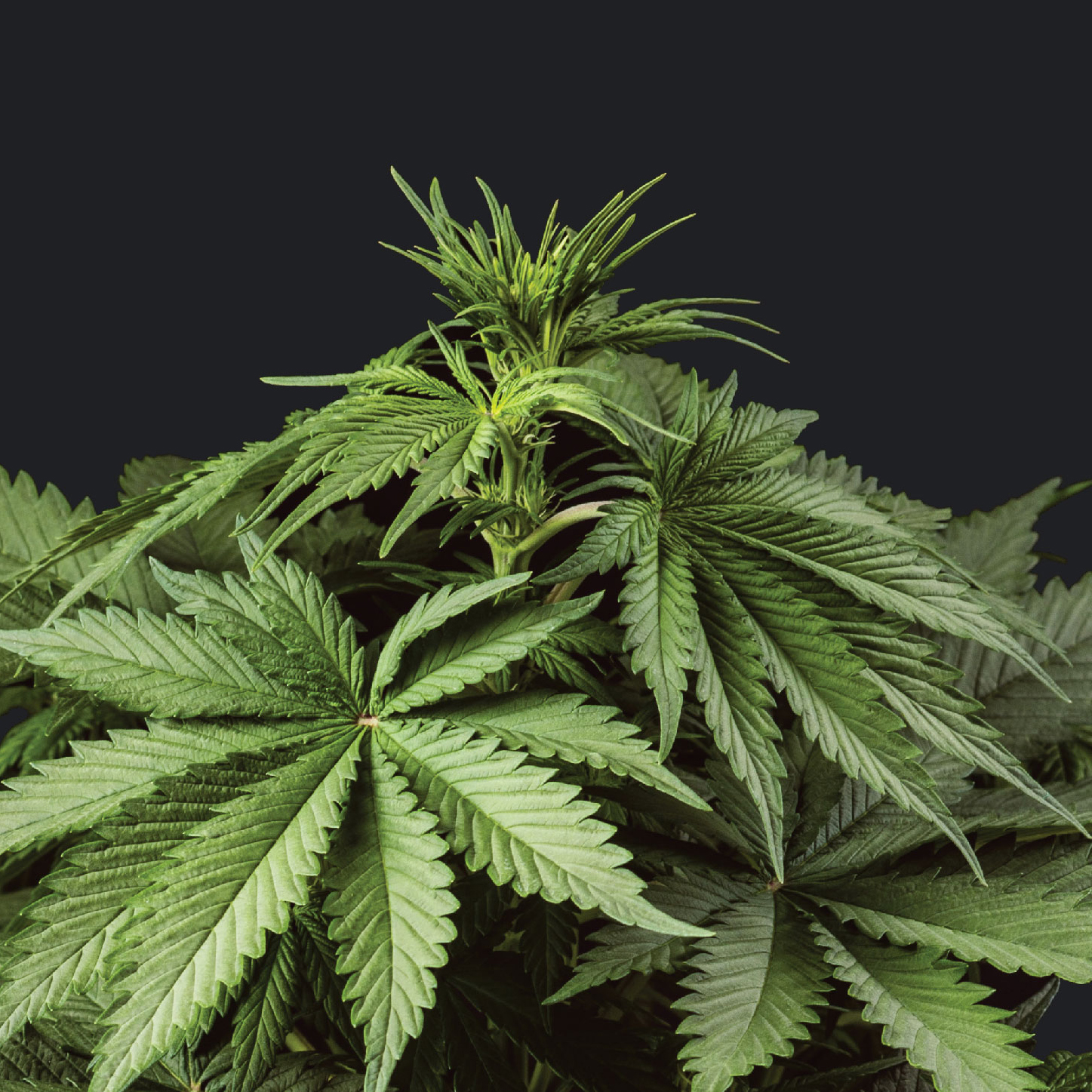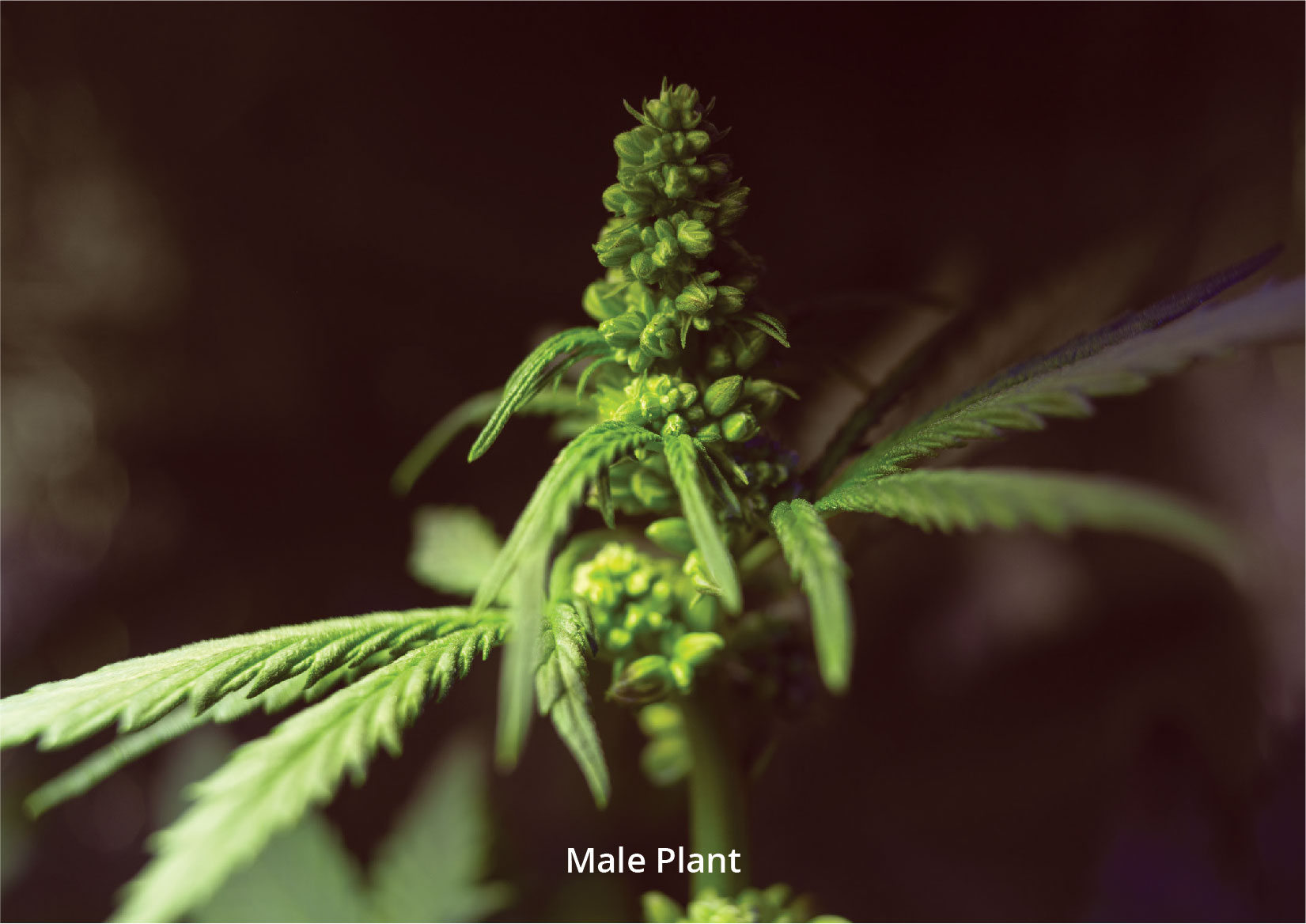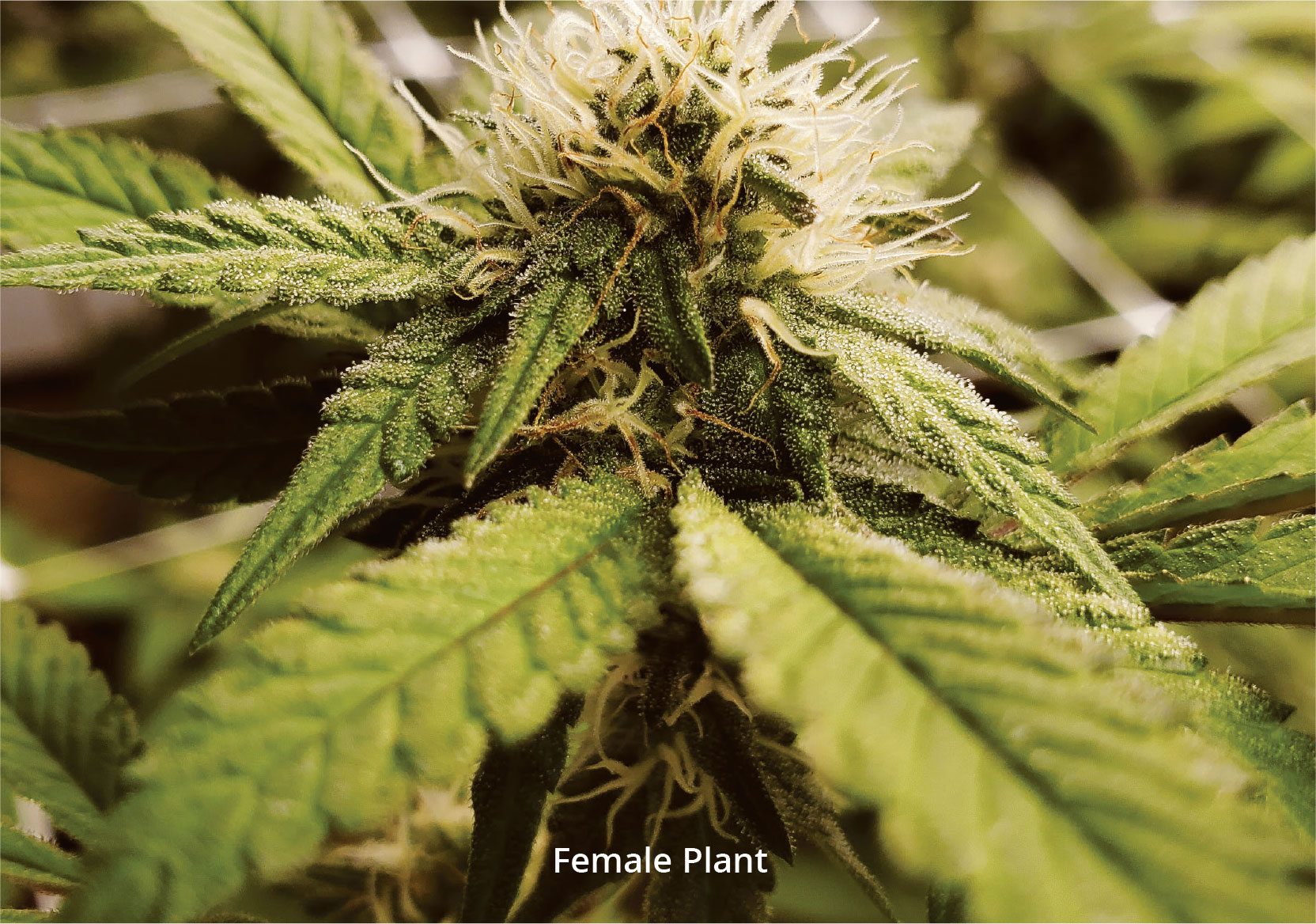Hemp is an annual plant that goes through its life cycle once a year, even if that life cycle takes only two to six months to complete. This is a result of the duration in which it is exposed to sunlight in nature. A hemp plant will only undergo vegetative growth when bathed in sunlight for over 12 hours a day, believing it to be spring and summertime. Otherwise, it will go straight to flowering when the plant detects less than 12 hours of sunlight a day, as the plant will believe that winter is coming.
Equipped with the right tools, indoor growers like you can have control over these factors to reproduce optimal climate conditions, and grow and harvest hemp year-round.
The Grow Cycle
The four distinct stages in a hemp plant life cycle include germination, seedling, vegetative, and flowering.
During the germination stage, the seed will develop a taproot upon detecting moisture to establish itself in the grow medium. Once the plant can stabilize itself it will push its main stem above ground, expose its first seed leaves, and transition to the next stage.
The seedling stage starts once the plant senses that the above and below ground environments are ideal for growth. The plant will then focus on establishing its root structure to prepare for nutrient and water intake. Establishing the root structure takes about one to two weeks to complete and is crucial for the plant’s vegetative growth. Once the root structure is in place, the plant will enter the vegetative stage.
The vegetative stage signals explosive stem and leaf growth above ground. If provided with over 12 hours of light a day, the plant will continue to grow uninhibited. This stage is best aided with the use of a nitrogen-rich fertilizer, which is the main nutrient the plant needs for new stem and leaf development. Once it has reached your desired size, reducing light exposure to 12 hours a day or under will advance your plant into the flowering stage.
The flowering stage is split into two sub-phases. The first half is the pre-flowering phase, or “final stretch”, when the plant will experience a growth spurt, resulting in a 50-100% increase in its height. Near the end of the final stretch, you will be able to tell the plant’s sex by its emerging nodes at the branching-off points. The plant then transitions into its second sub-phase, when white pistils start to appear on its nodes and ends of stems if the plant is female. If the plant is male, pollen sacs will appear on its nodes and end of stems instead.

Female and Male Plants
Female plants will produce flowers and buds that are rich in trichomes containing THC and CBD. Their flowering stage will take anywhere from two to four months for the buds to fully ripen, depending on the strain. To improve the yield, the fertilizer used up to this point will need to be exchanged with one that is high in phosphorus, which helps develop larger buds. Female plants can not only produce buds but also seeds when pollinated by male plants. Doing the latter, however, will also lower its trichome production.
When male plants mature their pollen sacs will develop larger and eventually open up to spread their pollen in as little as one month after the final stretch. Having male plants around to pollinate female plants will yield seeds to grow more hemp plants. But if your goal is to produce trichome rich buds, then male plants should immediately be removed from your grow space when detected.
One less common type of hemp is the ruderalis, or auto-flowering variety, which grows differently from the common light-sensitive, or photoperiod variety. Unlike standard hemp plants, auto-flowering plants will go through its entire life cycle regardless of how much lighting it gets each day.






